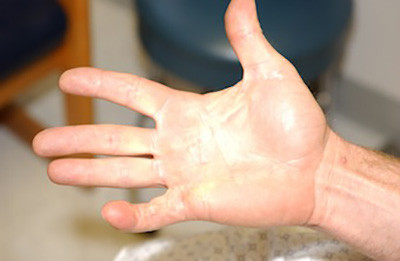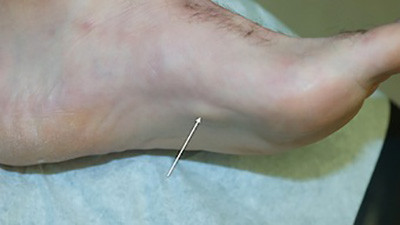Penile Curvature Causes
Home > Peyronie’s Disease > Penile Curvature Causes
Penis Curvature Causes
One of the primary symptoms of Peyronie’s disease is penile curvature. Penile curvature is when the penis bends shortly when when the penis is erect. Many patients are aware that the development of penile curvature is the primary symptom of Peyronie’s disease, few understand the penis curvature causes. This section explains how the development of Peyronie’s Disease causes the penis be crooked and bent during an erection.
Peyronie’s disease causes penile curvature because of the development of a scar or plaque under the skin. This scarring or plaque occurs within tissue called the tunica albuginea of the penis (see previous section for additional penis anatomy information). This plaque does not develop outside or near the tunica albuginea, but is actually a change of a portion of the tunica albuginea itself.


The tunica albuginea is elastic in nature, but the scarring and plaque is not. Therefore, the area with the scar is unable to stretch during an erection. This inability of a portion of the penis to stretch during an erection is what ultimately causes penile curvature.
Consider the example of a rubber water balloon. When the balloon is filled with water, it becomes longer, wider, and more firm (picture below on the right). When a penis becomes erect, instead of water, blood fills the penis. Instead of filling a balloon made of rubber, blood fills the tunica albuginea. As blood fills the space inside of the tunica albuginea, the penis gets longer, wider, and more firm.

Now, imagine if we took that same balloon and replaced one side of the rubber balloon with inelastic plastic. Then, when the balloon is filled with water, the side that contains inelastic plastic will not expand as much as the rubber side. This will inevitably lead to a curvature towards the side that contains the plastic, as seen above on the left. This is because one side expands more than the other side. In the same sense, Peyronie’s disease causes this to occur in the penis.
The direction of the penial curve is generally in the direction of the plaque or where the plaque is most prominent. For example, the most common location of plaque is along the top (dorsal) shaft of the penis. If plaque is mostly found on the top shaft, the penis will curve upwards during erection. In the majority of cases, the plaque is found along the top of the penis, and therefore the curve of the penis is usually upward, although it can curve in other directions as well.
Many of our patients are under the impression that Peyronie’s disease treatment consists of simply scraping off and removing the plaque. However, the plaque not something that is just sticking to the tunica albuginea where if it were removed, the penis in that area could then stretch again. The plaque is the tunica albuginea that has changed to become more stiff and removing the plaque would create a hole in the penis (balloon). Using the balloon example, the plastic is not attached to the exterior of the balloon. The plastic has completely replaced the rubber throughout a portion of the balloon, and removing the plastic would create a hole, leading to the water leaking out. Nevertheless, penile curvature can be corrected using other methods.
Peyronie’ Disease Causes
We talked about how Peyronie’s Disease plaques cause the penis to be crooked with an erection, but many of our patients want to know what causes the plaque to form in the first place, and whey they developed the condition. The cause of the scarring associated with the development of Peyronie’s disease is currently unknown. However there are a few suspected penis curvature causes. Some believe that penile curvature may be caused by an injury to the penis, perhaps during sexual intercourse. The injury may have occurred during one specific event or over repeated minor traumas where the patient may not ever remember any particular event.
Many patients with Peyronie’s disease also have Dupuytren’s contracture, a fibrotic process involving the hand. In rare cases, patients can also have Lederhose disease, which causes contractures in the feet. The fact that these diseases often occur concurrently has led some to propose that certain individuals may be genetically predisposed to Peyronie’s disease. However, it is not thought to be inherited. Therefore, it a man has Peyronie’s Disease, he should not worry that his son will also develop the condition.




It is important that our patients understand that if they have Peyronie’s Disease, it is generally not because of something they did or did not do, and that while the Peyronie’s Disease cause may not be known, the penile curvature treatment is what matters most to our patients.






